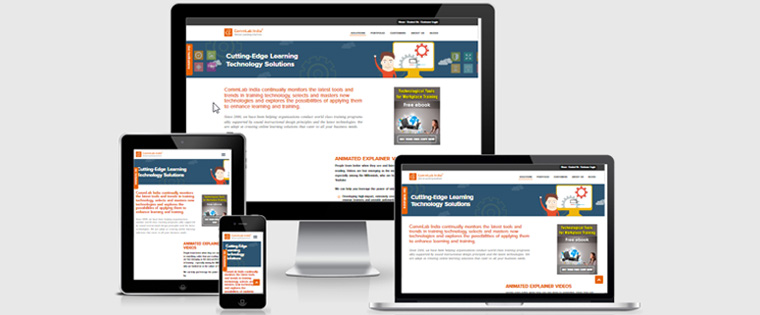5 Reasons You Should Modernize Legacy E-learning Courses
This blog post shares a few reasons that help you modernize legacy eLearning courses.

Companies have a huge backlog of online courses stuck in the past, with no takers. The corporate training landscape has seen massive changes with the evolution of technologies. Learners’ learning preferences have changed, existing technologies do not support legacy courses, and more importantly, your old content has become outdated. In such circumstances, how do you salvage your old courses that have great content, but are not current in terms of the way it is presented and also for current delivery purposes? You will need to modernize them and make them current. Here are the five main reasons that you can give your management to convince them to modernize your e-learning courses.
1. Make Courses Responsive
Over the years, you would’ve built your eLearning courses using Flash, Dreamweaver, HTML, or earlier versions of authoring tools. Now, these courses do not work on mobile devices, they can be played only on desktops. We live in a world where our learners access information from different devices at different times. This means that to best support their learning preferences, your e-Learning courses must work well, regardless of the device they may be using at any given time. To make your legacy courses responsive, you will either need to start from scratch, or you will need to leverage HTM5 tools. Along with using these HTML5 authoring tools, you need to follow a process to ensure your courses are converted quickly and cost effectively. Here’s a blog that throws some light on the legacy to HTML5 conversion process.
2. Deliver Lengthy Courses as Microlearning Modules
E-Learning courses that were developed five years ago were about 1 to 2 hours long. Now, for the 140 characters Twitter generation, serving the same content will make their day feel a million miles per hour. Employees now need short bursts of information, which they can quickly scan and digest. So, breaking long-running legacy courses into bite-sized modules works better in making good use of your investment on these courses. These old lengthy courses can be delivered as a curriculum with small courses of about 10 minutes each. Each microlearning module addresses one learning objective comprehensively.
3. Switch from One Authoring Tool to Another
Authoring tools such as Articulate Storyline, Lectora, and Adobe Captivate are updated with new versions on a yearly basis. For instance, if your old course was created with an older version of Articulate Storyline, you can now import the old file in Articulate Storyline 2 and update the course. The added advantage here is that newer versions of the tools have many new and enhanced features to create level 3 e-Learning courses that work on all devices. These tools can also make your courses compliant with latest industry standards (SCORM, Tin Can API, Section 508, and WCAG 2.0).
4. Make Courses Instructionally Rich
In earlier days, eLearning courses were usually developed by the HR, or by the SMEs, and were devoid of instructional principles and adult learning principles.They were developed as level 1 page turners. These courses also have outdated graphics, and poor audio with outdated GUI and old fashioned design. These courses need a facelift, so tweaks to the content can be made wherever appropriate, and the instructional and visual design have to be enhanced.
5. Update Content
With the passing years, the training needs of your company change. Hence, your old courses become obsolete. A lot of changes happen in your process, new products are launched, and old products undergo a lot of changes. Also, you compliance team makes a lot of changes to its rules and regulations; all these changes need to be updated in your legacy courses to make them contemporary to your contemporary audience.
So, there is an enormous requirement to evolve these courses with the latest findings and observations for them to be effective. Instead of scraping off these courses and starting from scratch, you can still refurbish them at low costs. There are many authoring tools such as Articulate Storyline, Lectora 17, Adobe Captivate 9, iSpring Suite, which can help you get the job done quickly.
I hope these reasons can help you take the initiative to give a makeover to your legacy e-Learning courses. The key here is, instead of jettisoning your old content, you can modernize it to make it contemporary.





